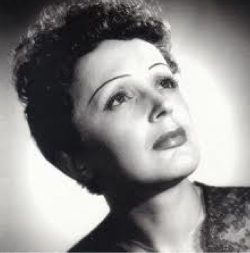
German armoured divisions rolled into Paris on June 14, 1940, inaugurating Germany’s four-year occupation of France. An armistice, signed eight days later in a forest clearing near Compiegne, where Germany had officially conceded defeat in World War I, carved up France into a patchwork of zones.
Despite France’s ignominious capitulation, theatres, cinemas, opera houses, art galleries and nightclubs reopened for business shortly afterward.
“By the spring of 1941, Parisians had adjusted surprisingly well to the occupation, fortunately perhaps, since it was evident that no one was hurrying to their rescue,” writes Alan Riding in a vivid, first-class book, And the Show Went On: Cultural Life in Nazi-Occupied France (Alfred A. Knopf). “The United States was reluctant to enter the war. The Soviet Union had a non-aggression pact with Germany. And while Britain had held off a German invasion, ‘plucky little England’ still posed no threat to the [German] Reich.”
Both Germany and France had a vested interest in promoting normality. Germany would face fewer problems if Parisians were distracted by the opiate of culture, while France was eager to pretend it was culturally independent, he writes.
As Riding points out, the French had reason to be proud of their cultural legacy. The great movements in the visual arts, from Impressionism and Post-Impressionism to Fauvism and Cubism, had arisen in France.
The national theatre, the Comedie Francaise, offered a steady fare of classics. French novelists, including Marcel Proust, Louis-Ferdinand Destouches (better known as Celine) and Anatole France, were household names.
Paris, in the 1920s, had been a haven of budding talents such as Ernest Hemingway, John Dos Passos and F. Scott Fitzgerald. Paris, after the rise of Adolf Hitler in 1933, had been a place of refuge for Jewish writers and intellectuals ranging from Joseph Roth to Walter Benjamin. And Paris, on the eve of World War II, had been characteristically effervescent, with new plays opening, theatres and movie houses full, the Musee d’Art Moderne scheduled to open, and the Eiffel Tower celebrating its 50th anniversary.
Germany’s ambassador to France, Otto Abetz, understood the prestige enjoyed by artists and writers in France, and so he reached out to them. Germany’s laissez-faire attitude concealed a policy whose clear objective was “to break French domination of cultural propaganda,” as a German government minister put it in a memo to Abetz. But on a practical level, Abetz gave the French a remarkable degree of leeway insofar as culture was concerned.
Movie theatres were permitted to reopen immediately after the conquest of Paris, Riding notes. British and American films were banned, as were the movies of Jewish directors and Jewish or anti-Nazi actors, leaving the field open for locally-made movies. Between 1941 and 1943, box office receipts jumped by 163 percent, with bedrooms farces, romantic comedies and historical dramas attracting moviegoers.
The French film industry was directly affected by Vichy France’s anti-Jewish legislation, which was promulgated in October 1940.
No one should have been surprised by this edict. France, as Riding reminds us, had been a “fertile ground for fascism” from the late 19th century onward, when its Jewish population tripled from 90,000 in 1900 to 300,000 in 1940.
With Germany determined to “cleanse” French culture of Jewish influence, Vichy France was allowed to ride roughshod over Jews.
The art collections of prominent Jewish families – the Rothschilds, the Wildensteins and the Sterns, among others – were expropriated, and Jewish-owned art galleries were Aryanized. Meanwhile, Jewish publishing houses were Aryanized.
As these measures took effect, the libraries of Jewish artists, musicians and intellectuals were pilfered. Some 20 theatres owned by Jews were Aryanized and renamed, and major theatres were required to dismiss Jewish employees.
Although the German invasionprompted a flood of cultural workers to leave France – the actors Charles Boyer and Jean Gabin and the directors Jean Renoir and Rene Clair, to name but a few – many stayed behind.
Edith Piaf, the chanteuse, said, “My real job is to sing, to sing no matter what happens.” The jazz guitarist Django Reinhardt, a Roma and a sub-human in Nazi ideology, turned down the option of exile and continued to perform at the Hot Club de France.
The fashion designer Elsa Schiaparelli moved to New York City rather than endure the German occupation, but Coco Chanel, Nina Rici and Jeanne Lanvin remained in Paris. Chanel, in particular, curried favour with the Germans, starting an affair with a German army officer.
Still other French nationals, notably the novelist Andre Malraux, went into internal exile, turning down invitations to join the resistance movement and claiming that only Allied armies could liberate France of the Nazi yoke.
Germany’s occupation of Paris ended in the summer of 1944 when the Allies stormed the city. Hitler ordered his generals to sack it, but they ignored his command and Paris was saved from gratuitous destruction.
French collaborators were spared little mercy. Ad hoc military tribunals condemned about 700 notorious traitors – mainly Gestapo informers, police and French soldiers who had joined the Wehrmacht – to death. And in a wave of extra-legal killings carried out by citizens and members of the resistance, upwards of 9,000 collaborators were summarily executed.
French women who had slept with Germans had their heads shaved in public. Still others were stripped naked and paraded through irate crowds.
France’s High Court of Justice meted out prison sentences to senior politicians who had been closely associated with the Vichy regime, while lower-tier Courts of Justice handed down more than 6,000 death sentences, only 767 of which were actually carried out. The last person to be executed was Jean Mamy, who had made Forces occultes, the only antisemitic propaganda film of the German occupation.
In conclusion, Riding says that while the French enjoyed a degree of cultural autonomy under the German occupation, they lacked real, untrammelled artistic freedom. As he tartly observes, “They had sufficient air to survive, but not to lift off.”
